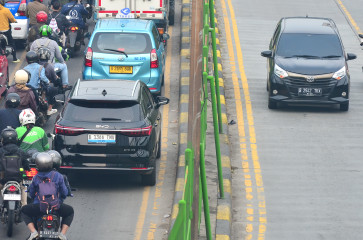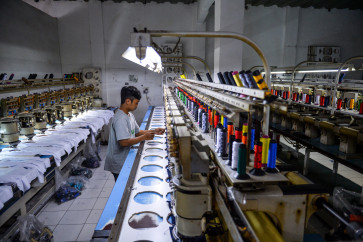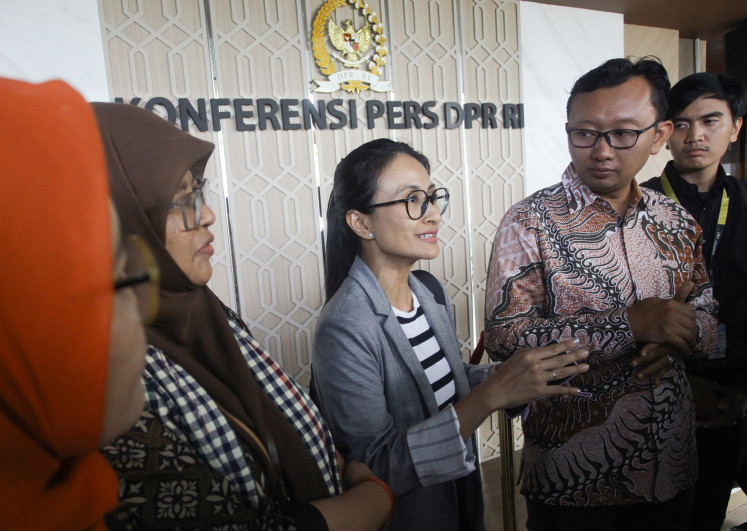Popular Reads
Top Results
Can't find what you're looking for?
View all search resultsPopular Reads
Top Results
Can't find what you're looking for?
View all search resultsRenewable energy left behind by cheaper options
The country may face a long road ahead in its effort to procure electricity in remote regions through the use of renewable energy sources, while electricity procured from fossil fuel remains a more economically feasible option
Change text size
Gift Premium Articles
to Anyone
T
he country may face a long road ahead in its effort to procure electricity in remote regions through the use of renewable energy sources, while electricity procured from fossil fuel remains a more economically feasible option.
General Electric (GE) country leader for gas power systems George Arie W. Djohan said that despite growing public support, the development of renewable power in the country had yet to attract the same enthusiasm from the government and state-owned electricity company PLN.
“We need serious determination from PLN because from what we’ve seen so far, they always go for the cheapest way to procure electricity and renewable energy is not cheap,” Arie said Thursday.
“Renewable energy-powered plants will never win against coal-fired power plants.”
George said that the government and PLN should take advantage of the fact that continuously developing technologies meant older technologies used for renewable energy were now significantly cheaper.
Furthermore, the country should not just calculate the economic feasibility of a power source but also take into account the environmental and health effects of the prolonged use of coal-fired power plants.
“It might be cheaper but we have to see the other external impacts. For example, how does it affect the environment? It might affect breathing and increase need for medical care. In a macroeconomic sense, it could become a burden for the government,” George elaborated.
The government is trying to procure electricity for 12,659 villages in eastern Indonesia using renewable energy sources, and has set a target to procure electricity for 10,300 villages by 2019.
Up to 67 percent of the villages are located in six provinces — Papua, West Papua, Maluku, North Maluku, East Nusa Tenggara and West Nusa Tenggara — and will need a total capacity of 180 megawatts (MW), with an estimated consumption rate of 0.6 kilowatt hours (kWh) per household.
Although ambitious, the plan has been long-coming as the country holds vast renewable energy resources given its location in the Ring of Fire and its status as an archipelago.
The country is estimated to have approximately 28 gigawatt (GW) in geothermal potential and 75 GW in hydropower potential to generate electricity. The total potential renewable energy is estimated to be more than 300 GW.
Data from state-owned electricity company PLN shows that only 5.9 percent of electricity generated in 2015 came from hydropower plants, followed by 4 percent by geothermal energy. Electricity generation fueled by coal remains the highest at 55.7 percent.
The government has created three scenarios depending on the location of villages. If several villages are close to each other, the government plans to set up extension grids, if a village has households situated near each other then they would procure electricity through a solar mini-grid system. Meanwhile, villages with households further away from each other would have a solar home system.
GE Indonesia CEO Handry Satriago said that the government must also consider external factors when developing energy in remote regions.
“We need to see whether using the simplest technologies would be enough for remote areas. For example, it might be adequate to have one solar cell in a single village. Wind turbines are also a good choice but are dependent on speed,” he said.
GE Indonesia itself, which recently acquired Alstom Power, is participating in several tenders to develop electricity from various renewable energy sources, including geothermal, hydro and wind-powered plants. The company also aims to win tenders for 3,000 MW nationwide from PLN this year.
The Energy and Mineral Resources Ministry has repeatedly emphasized the importance of procuring electricity for these remote regions to encourage development and boost local economies.
“The Indonesia Terang [Bright Indonesia] program is one of our innovative policies, and is a program that must be completed to fulfill Indonesia’s electrification ratio target,” electricity director general Jarman said.
In the long term, the country targets renewable energy to make up 23 percent of the electricity generated by 2025. Renewable energy currently makes up approximately 11 percent.










